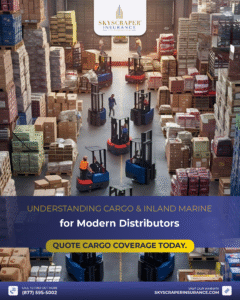Climbing gyms come into existence for a variety of reasons. Sometimes, it’s to address a lack of climbing opportunities in a geographic area. Other times, it’s to allow for year-round climbing in a location where seasonal weather might impede the ability to climb outside. Still other times, it’s a passion project or more of a community service―a way to introduce a local community and youth to climbing who might not otherwise be exposed to the sport.
Finally, a gym might be opened to serve as a gateway to and training grounds for outdoor climbing. Participants can visit a gym to get introduced to and familiar with the basics of climbing, and then the gym can serve as a springboard to their growth in the sport and training for climbing on natural rock. Since the first climbing gyms, countless gyms have offered instructional courses on gym premises or gym-to-crag guided outdoor trips. This article will focus on how you as a gym operator can manage risk with your single-day gym-to-crag guided outdoor trips.
Taking your operations outside a gym setting does strip away a level of control over certain risk factors. It gets you away from engineered climbing structures, it leaves you more subject to the weather, and it can take you away from easy emergency medical access. This loss of some control makes many insurance carriers a bit wary, but a responsible management plan will help protect your participants and your business, and will protect the larger climbing gym industry from suffering accidents. As with any climbing gym program, we recommend you have your gym-specific operational procedures documented and standardized so that expectations are clearly articulated to your guides and they operate in a similar fashion to one another.

Basic Operations & Staff Training
There are a few reputable associations that provide certifications for outdoor climbing guides and instructors. These associations include the American Mountain Guides Association (AMGA) and the Professional Climbing Instructors Association (PCIA), who both act as a compass in the outdoor climbing guide/instructor world. For basic operational direction, you should refer to them for guidance. They should also be your source of training for outdoor climbing guides, with your guides achieving an AMGA Single Pitch Instructor (SPI) certification for rock climbing or a PCIA Single Pitch Climbing Instructor (SPCI) Certification. If you are offering multi-pitch climbs, an additional minimum certification applies.
Besides climbing-specific training, there’s medical training to consider. How far away is the crag from emergency medical attention? Are your guides equipped to handle an emergency situation until professional medical attention arrives? Possible applicable medical trainings include CPR, First Aid, Wilderness First Aid (WFA), Wilderness First Responder (WFR), or Wilderness Emergency Medical Technician (WEMT). Your guides’ climbing certification or your gym’s insurance carrier may have minimum requirements in this realm. To maintain an AMGA Single Pitch Instructor Certification, for example, the guide must have a current CPR Certification and also must have a current WFR Certification or higher.
When deciding your guide-to-participant ratios for trips, there are a few considerations. You may be subject to requirements by your insurance carrier, or the land operator issuing your permit may have a maximum participant rule. On the ‘maximum number of participants per guide’ side of this decision, you of course want to make sure you have enough guides to effectively supervise your at-height operations for the number of participants you are bringing along.
On the opposite side―‘minimum number of guides to make a trip happen’―there are a few additional considerations. Is the crag in a remote location? If an accident occurred, is one lone guide set up to effectively and efficiently manage the emergency situation? Or do you need a second guide? For example, do you need one to stay with the injured party and continue CPR while one runs to guide in emergency personnel to the injured party? At least one guide in each group should always be certified at the Single Pitch Instructor level or higher, but other team members may be uncertified guides in training, or apprentices.
As you are structuring your own program’s guide-to-participant ratios, one more thing to think through are potential claims of sexual abuse or molestation. It’s always ideal to have at least 3 total people (guides + participants) on a trip so you avoid 1:1 situations, especially if you have a participant who is a minor. Your insurance carrier may have requirements here as well.
Another operational consideration for outdoor climbing is, of course, the weather. Lightning strikes are always a major weather concern―you don’t want to be caught on top of a mountain in the middle of a thunderstorm! Think about what your operational parameters here will look like and when you will stop climbing and seek shelter. If you’ll have cell service at the crag, you might download a weather app where you can see the proximity of lightning strikes in your area. If you won’t have cell service, perhaps you’ll use the counting method to understand how far away the lightning is from you. Your operational parameters might look something like “wait 15 minutes after the last lightning strike within 10 miles”. While lightning typically gets the spotlight in this category, it’s not the only factor. For effective risk management of climbing with novices, you also need sufficient visibility and audibility.
Gear
You don’t typically see climbing helmets in an indoor setting, but climbing outside has different risks and additional equipment requirements. Participants and staff need to be protected from overhead falling objects while climbing outdoors. Besides your climbing gear, you should also consider personal gear. Providing a required gear list to your participants ahead of time can help make sure they are coming adequately prepared. This can mean synthetic clothing, a rain jacket, appropriate layers, and suitable shoes for the approach. Sending your guides with a few pieces of extra gear on hand is a good idea, maybe with a few ponchos, an extra fleece top, etc.―whatever is appropriate for your local environment. A first aid kit needs to make it on your guide’s gear list, as well.
And finally on the gear list, reliable communication devices need to be required for all climbing locations. If there is dependable cell signal at each of your crags, you can simply require guides to carry cell phones with a full charge on trips. But if cell service can be spotty or non-existent, it’s time to start thinking about other communication devices, like a satellite phone for guides to use in case of an emergency.
Trip Reports
Documentation is key if it comes down to an insurance claim and defending yourself in court. Just as documentation of gear inspections is fundamental, documentation of your outdoor guided trips after they occur can also go a long way to help you in court. It’s recommended to keep trip reports with the guide names, participant names, crag locations, and any guide comments on how the day went, what the weather looked like, and any minor incidents that occurred. If an accident requiring professional medical attention occurs, a full accident report should be completed, just as you do in the climbing gym.
Transportation
How are participants getting to the crag? If they are being driven by guides in a gym-owned bus or shuttle, be aware of the extra risk that brings to the table. We’d recommend having a driver safety training and check-off plan with strict seatbelt requirements for all in the vehicle. The extra risk here especially comes into play with your insurance policy limits. If you are offering participant transportation, it’s a good idea to have an umbrella/excess insurance policy as a part of your insurance program to provide additional limits beyond your general liability policy. This is because you are more prone to accidents that will exceed your basic per occurrence limits.
Waiver & Insurance
When it comes to your waiver, does it include outdoor climbing risks in the acknowledgement of risks? And―often overlooked―does it mention the risk of riding in a bus/shuttle, if you transport your participants in one? Do you have a reliable plan in place to ensure all participants, before getting into a remote area without cell service, have a signed waiver?
You should talk to your insurance agent and ensure that your general liability policy allows for outdoor climbing trips. Many policies have a limitation of coverage to on-site operations that needs to be removed to accomplish adequate coverage for a gym to crag program.
What Does Your Plan Look Like?
You may already have a gym to crag program in place and are reading this article to make sure your risk management plan is keeping up. Or, you may be an existing gym looking at expanding into a new offering. Either way, as our industry is always growing and changing, we’d love to hear what your operation is doing to manage your outdoor guided trips and we’d love to help you brainstorm creative solutions to your own risk management hurdles. Let us know what risk management topics you’d like to see in our future articles!
Let Skyscraper advise for you today,
We Insure Your Vision for a Brighter Tomorrow.









